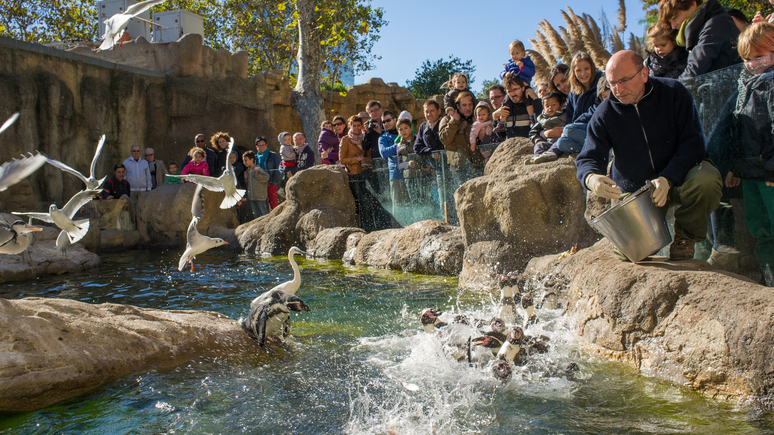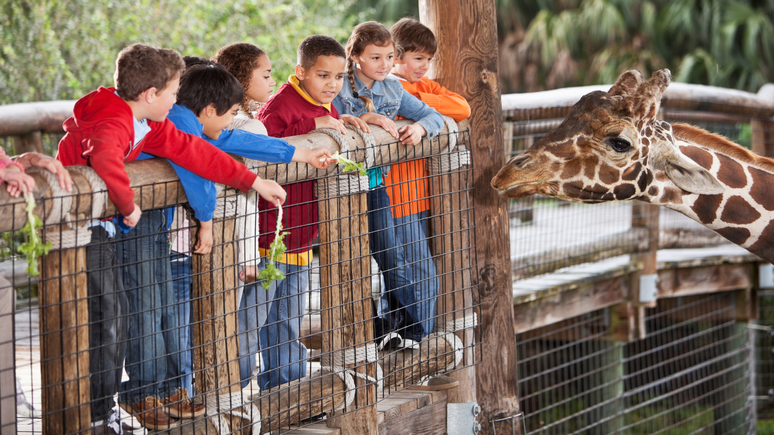After all, should we do away with zoos, or are they vital to preserving species and conducting research?
The question of the zoo generates a lot of controversy, as there are different opinions on the existence of this activity, both positive and negative. Thus, we have the community of biologists defending the existence of zoos as a way to preserve species, being an educational and rehabilitation center for animals.
On the other hand, animal rights activists argue that most zoos are used for animal entertainment and exhibition, considering such activity cruel and unnecessary. Such a prospect is considerable, especially when considering the history of zoos.
In the midst of this healthy debate, of course, there are opportunists, such as, for example, the tycoons who build zoos to profit from the entertainment and use of animals, under a disguised discourse of conservation and environmental education. Currently, it is still common to have zoos that appropriate animals.
Keeping captive animals alive is nothing new, several ancient civilizations had this habit. Curiosity and the need to own animals are as old as our existence.
The oldest zoo in Brazil was opened in 1895 and was aimed at fun and entertainment. The enclosures were small and equipped with bars, with the idea of being small to encourage human visits and to ensure their use. The small pens are nothing but torture and sadism, as the animals are completely incapacitated and stressed.
Currently, although it is still common to have animals “in shop windows”, this concept has changed a lot. Many organizations defend the creation of responsible Bioparks and Sanctuaries, aimed at the welfare of the animal, by building reserved enclosures, with vegetation and running water, in areas far from highways, roads and houses, providing only comfort to the animal, which even in appropriate places they are incarcerated.
In Brazil a change is underway, moving from the idea of a zoo as a showcase for animals treated for exhibition (animals exhibited only for mere entertainment), to research centers in animal reproduction, conservation and animal welfare. These centers are designed for the animal and not just for visitation. In this way they can really be considered conservation sites, but this is not yet a reality in Brazil. Most zoos lack facilities and abuse entertainment for profit.
In addition to all this, as vegan activists, we understand that there is no need to have zoos as a form of environmental education, considering the current technological development and the various resources available.
It is important to have rehabilitation centers set up to protect animals and their species. We know that animal trafficking is the order of the day, pedestrians are run over and many other human actions, such as deforestation, are driving several species to extinction.
It is absurd that there are still places where animals are exhibited just for fun; this should not be accepted. The handling, recovery and treatment of animals should be priorities in these places that house animals from trafficking, fires, deforestation, etc.

Most people who go to zoos these days do so out of curiosity, just to see an exotic or hard-to-see animal in the wild. Unfortunately, few go with the intention of educating themselves and their children. However, it is possible to see the beginning of a change in relation to zoos in Brazil.
Recently, 18 giraffes were brought to Brazil to be placed in Rio de Janeiro’s Bioparc for public display. This is inadmissible. Removing the animal from its natural habitat, from its continent of origin (Africa) and taking it to another part of the world with the aim of making it palatable is a great aberration.
There is a contradiction in the action of those who go to the zoo to see an animal they find spectacular, but ignore that this animal has been exploited, abused and removed from its natural habitat to be used there as a product. This is a complete contrast.
The zoo must be thought out 100% for the animal. Every institution has the duty to think about enclosures, visits, reintroductions and treatments aimed at the well-being and protection of animals. If we want our children to see how beautiful animals are, we can introduce them to great movies, documentaries, games and books.
Source: Terra
Rose James is a Gossipify movie and series reviewer known for her in-depth analysis and unique perspective on the latest releases. With a background in film studies, she provides engaging and informative reviews, and keeps readers up to date with industry trends and emerging talents.







